In addition to the seabirds there are a few other breeding birds to be found on the island but they are few and far between and don't necessarily breed every year although in the case of the Barn Swallows
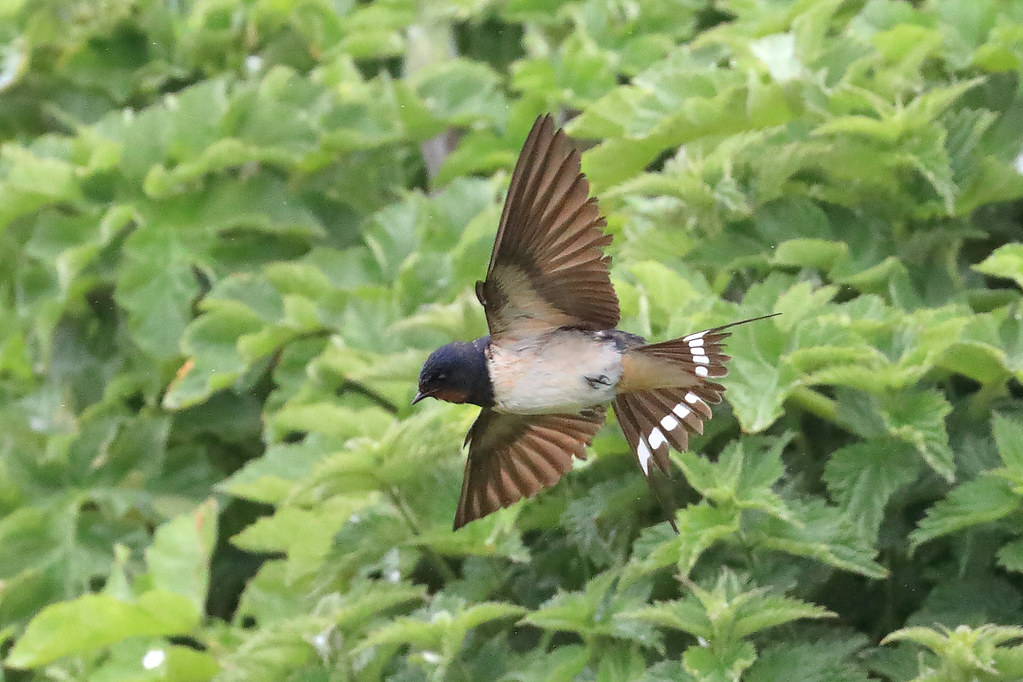
and Rock Pipits

it appears they have become permanent fixtures whereas I'm not sure if the Wrens I have seen in the past bred there this year.One species that did try unsuccessfully to nest was a pair of Carrion Crow. Their nest high up on the Main Light was blown away in the storm we experienced which is a benefit to the island as there are enough predators there already without the need for more egg thieves.
Two species I have failed to mention so far are the breeding Oystercatchers of which there are a few.
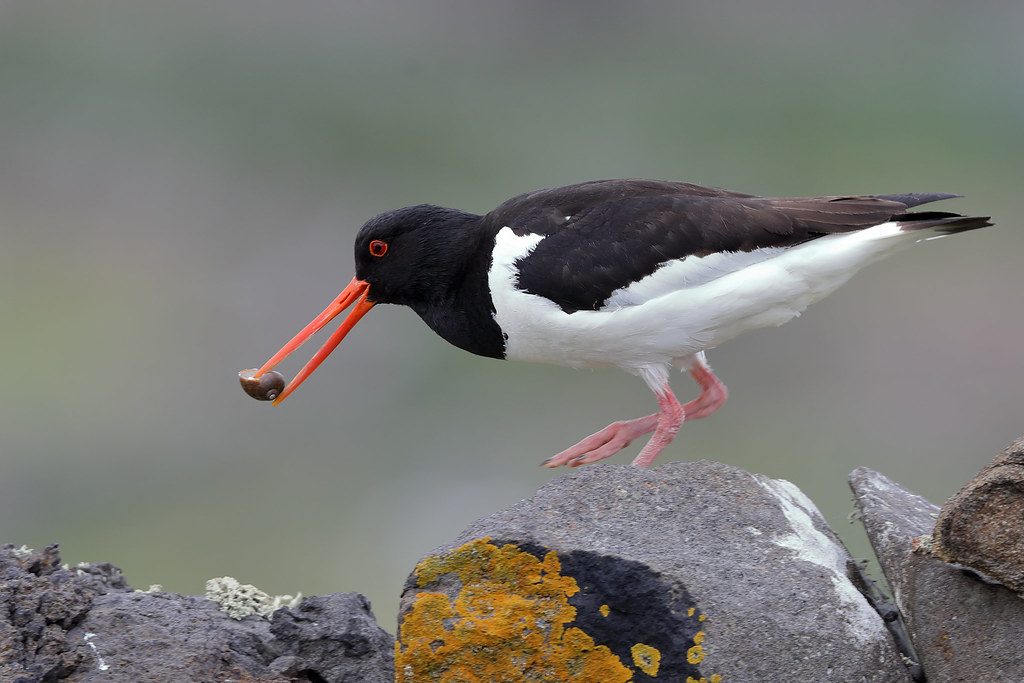
Oysters being substituted for snails as a large part of their diet too.
One of the benefits of being a late breeding season was that for the first time since the April visit in 2012 I got to see and photograph male Eider ducks.
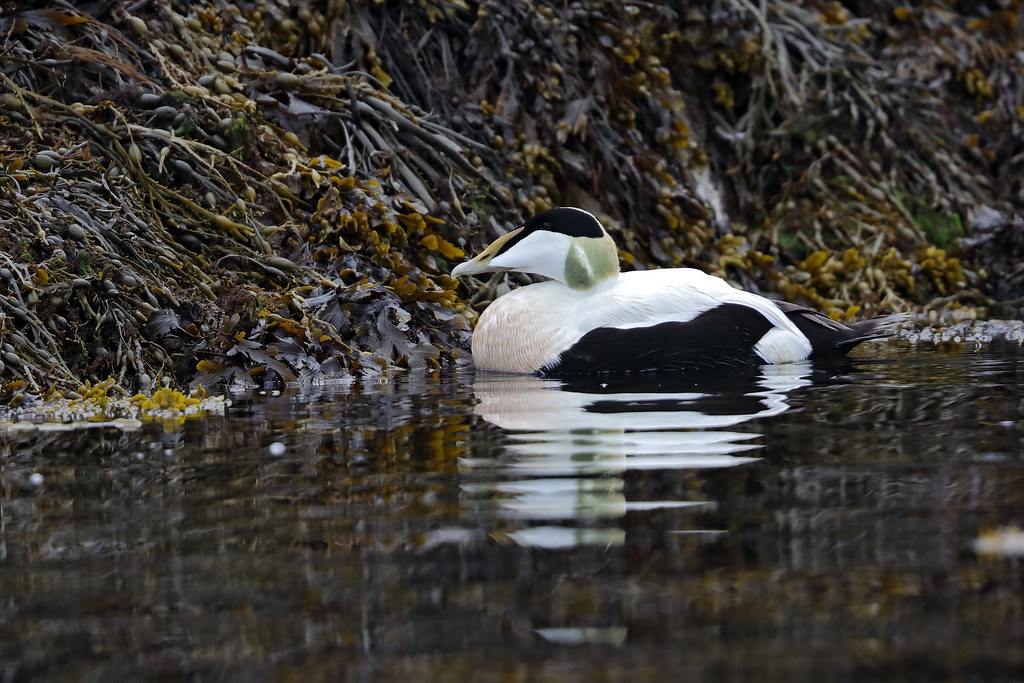
There were just one or two still on the island and I was reminded of the eerie sound they make as a mating call.
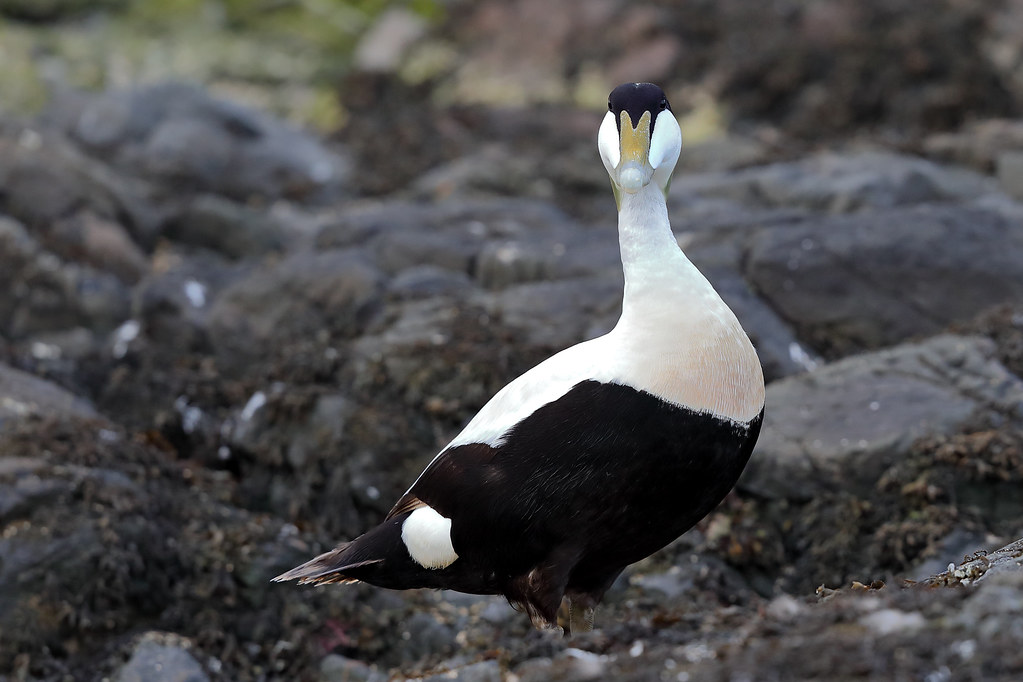
Possibly the most handsome duck I have seen but they are also feckless fathers it would seem as they desert the island once the eggs are laid and leave the mothers to do all the incubating and rearing.
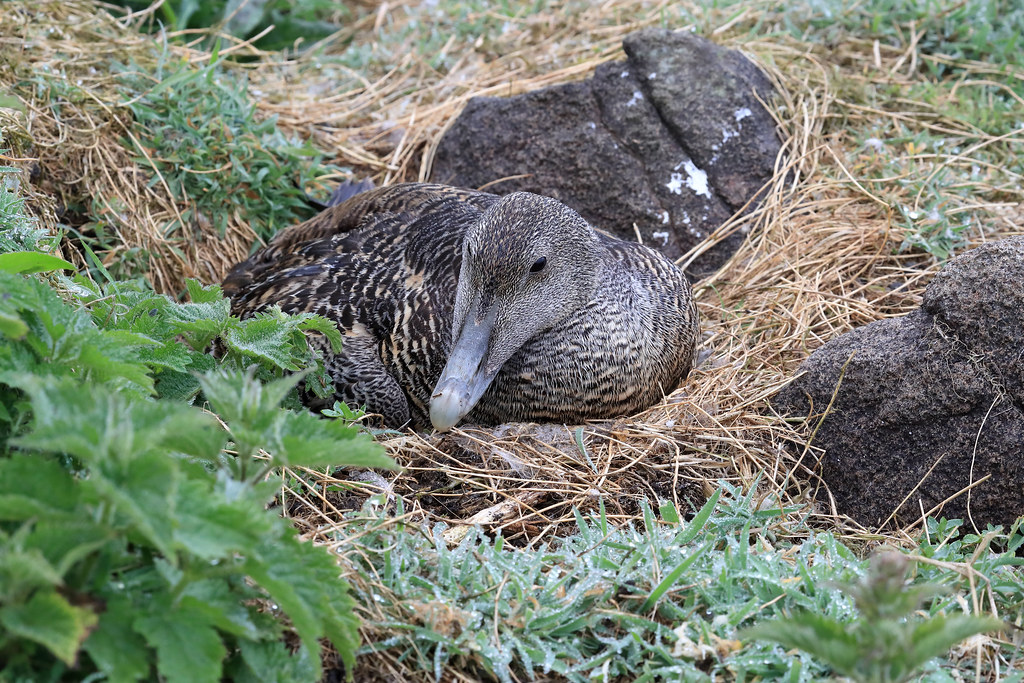
I don't know how they manage to survive but they never leave their nests it would appear and rely on camouflage for protection from predation.
Once the ducklings are big enough to move the females gather together to form defensive creches.
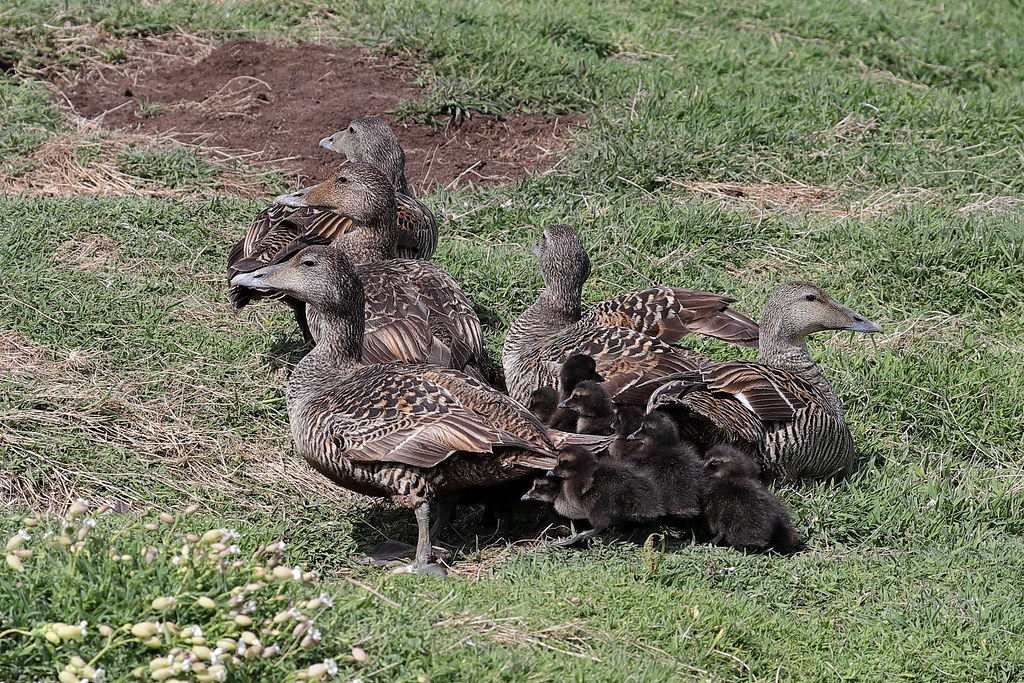
although sometimes their sense of positioning doesn't look too sound.
As previously mentioned, the Isle of May has a substantial seal colony, both Common and Grey Seals too.
They can be seen basking on the rocks at low tide but very often are only well viewed from above as was the case with this juvenile.
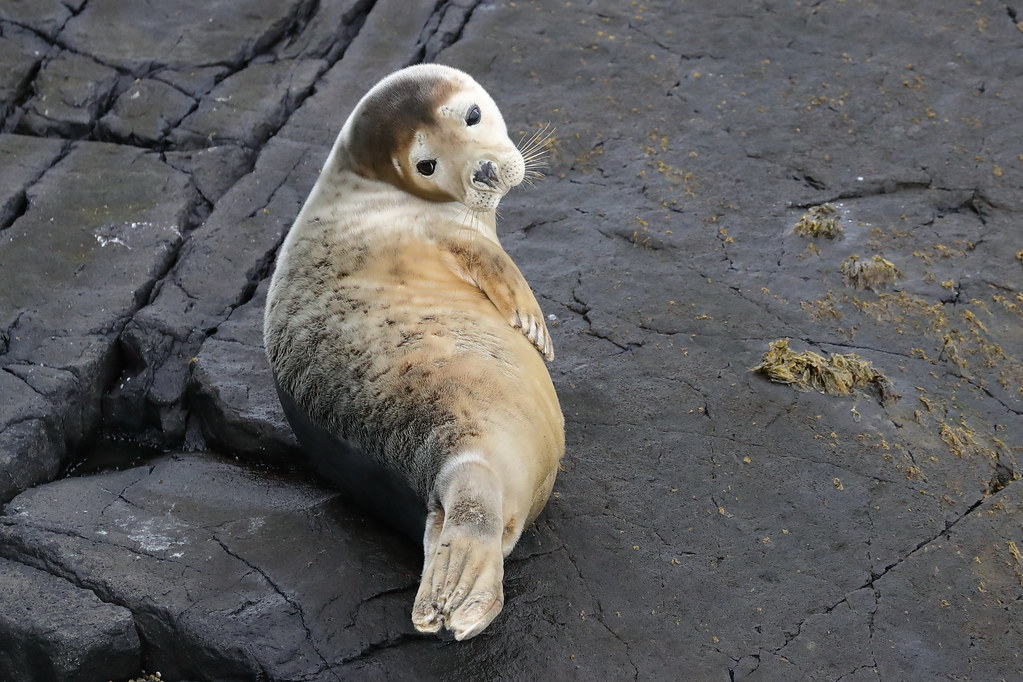
Sometimes they come right in to the harbour and are naturally curious about your presence.

and if you are lucky you might even get to watch one out of water too.
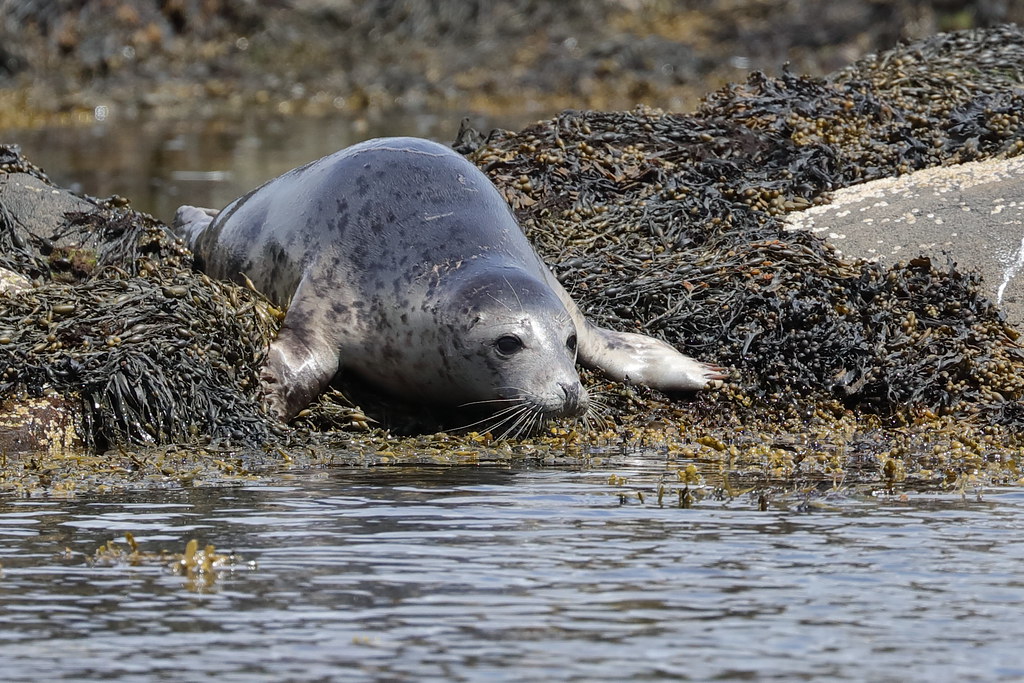
I have never been lucky enough to witness other cetaceans from the island but sightings of Orca, Bottlenose Dolphin and one or two whale species have been noted on occasion.
The other main mammal inhabitant on the island are the rabbits.
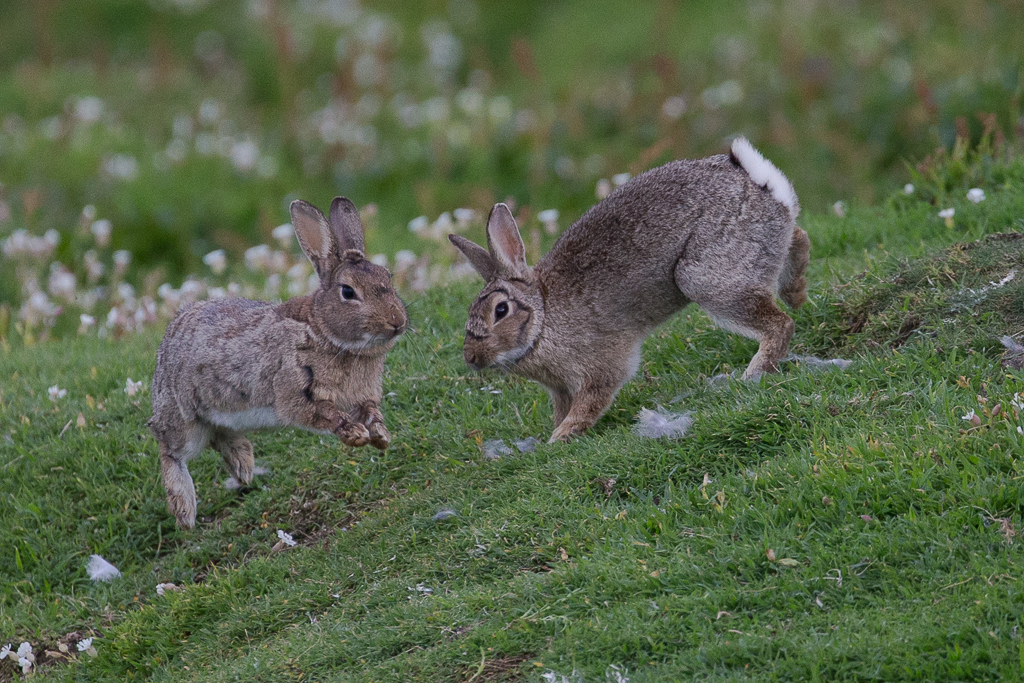
Originally brought to the island by Monks as a food source they are now huge in numbers but it's that reason there are so many Puffins because they use the burrows for nesting.
While we were there this year we also came across a team of "mousers' who were surveying the island population and in the past a friend of mine has conducted a full island survey of the various spider species to be found too!
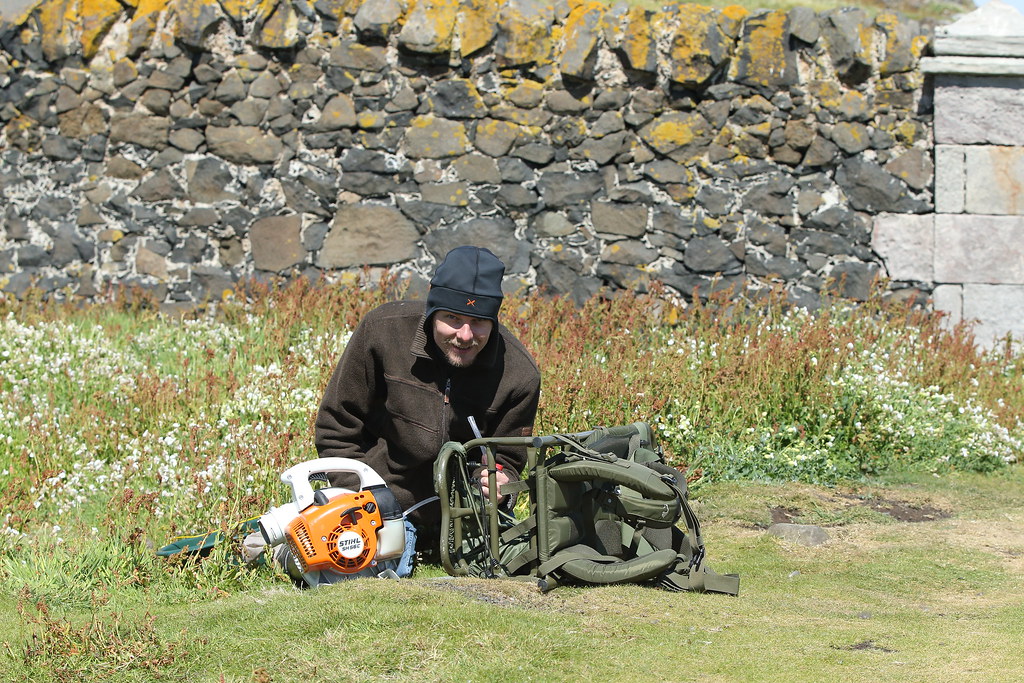
He found quite a lot of previously undiscovered ones too so although the island is fairly small it still has secrets to give up to those who are prepared go searching.
During spring and autumn the Isle of May is a regular stopping off point for migrating birds and that is the most popular time for the ardent birdwatcher to visit in the hopes of catching glimpse of a rare species. I was lucky enough to be on the Island in 2012 when the first ever Black-winged Stilt was recorded.
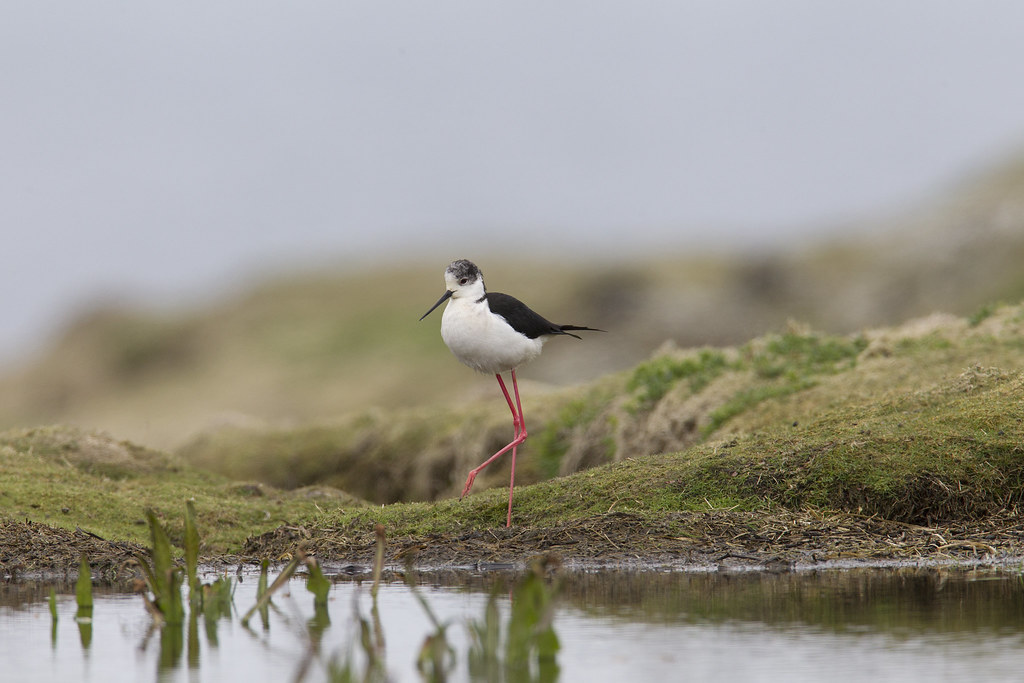
A real rarity to Scotland it was a cause of frustration to those on the mainland as the weather prevented the day trippers to sail on most of the few days it stayed.
Various Owl species are recorded on migration but it's a surprise to me that they don't stay longer as there seems to be a plentiful supply of food.To this day the only Long eared Owl I have seen is one that landed on the island again in April 2012.
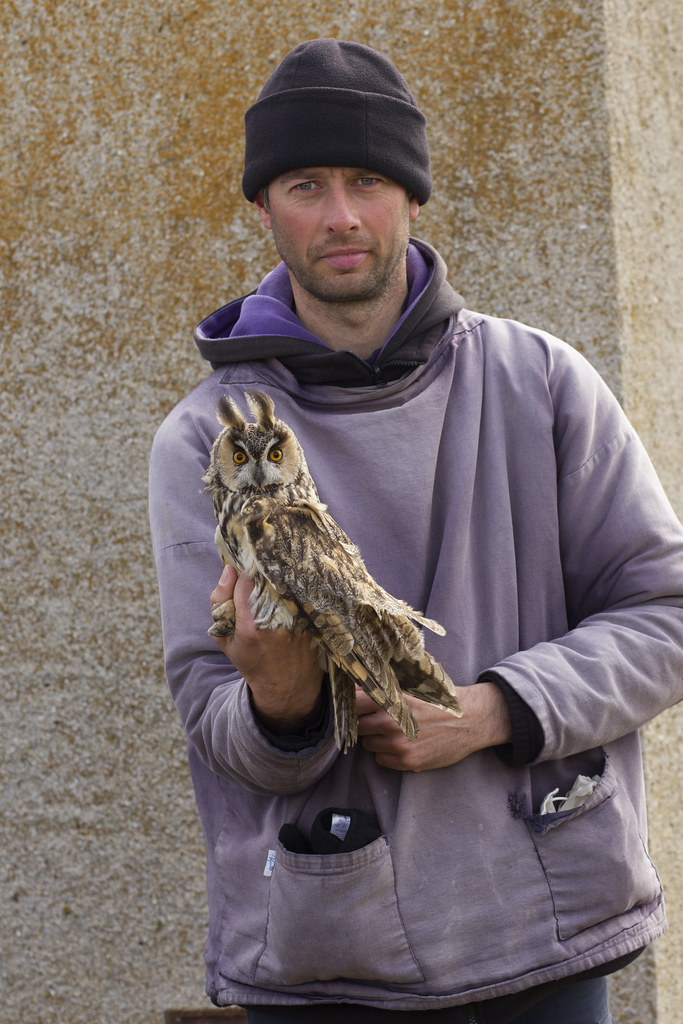
Part of the duties of residents of the observatory is to keep an accurate log of the species seen, and for those who are qualified to do so, to ring and release them back in to the wild in an attempt to learn more about migration patterns, longevity etc.
For me though it's not just the wildlife it's the people I have met and befriended too that make the island special.

I have nothing but gratitude to those who so freely give their time to maintaining the observatory and associated workings.Most people who visit probably take all this for granted but on one occasion I visited there was a work party staying with us and doing some work, and hard dirty work it was too.
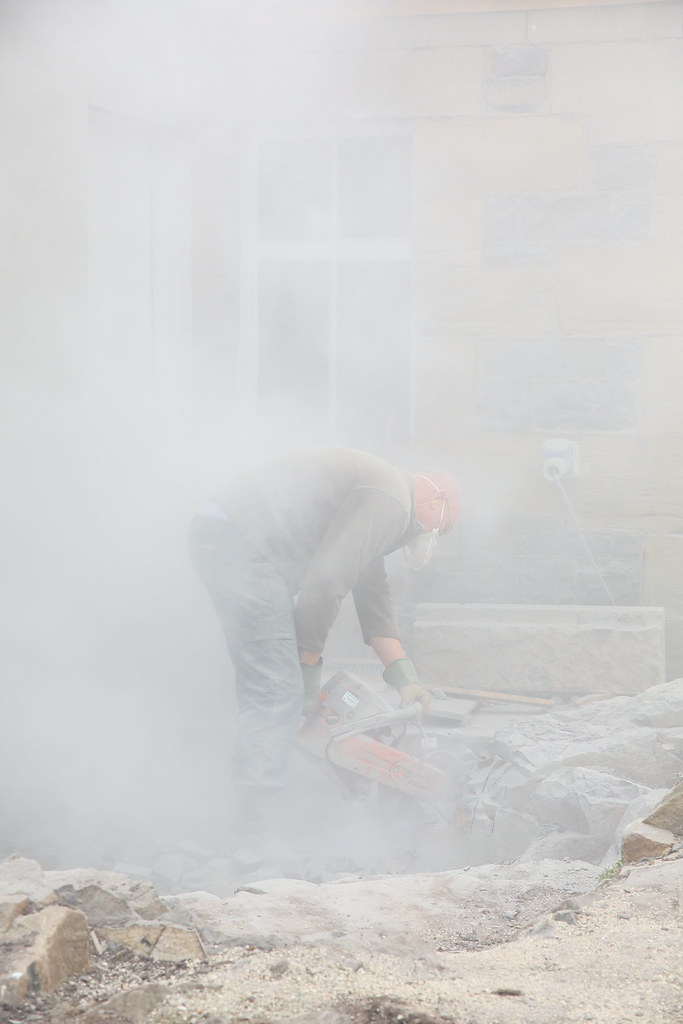
All I could do was offer to cook, but at least the person travelling with me was competent enough to do some electrical work.
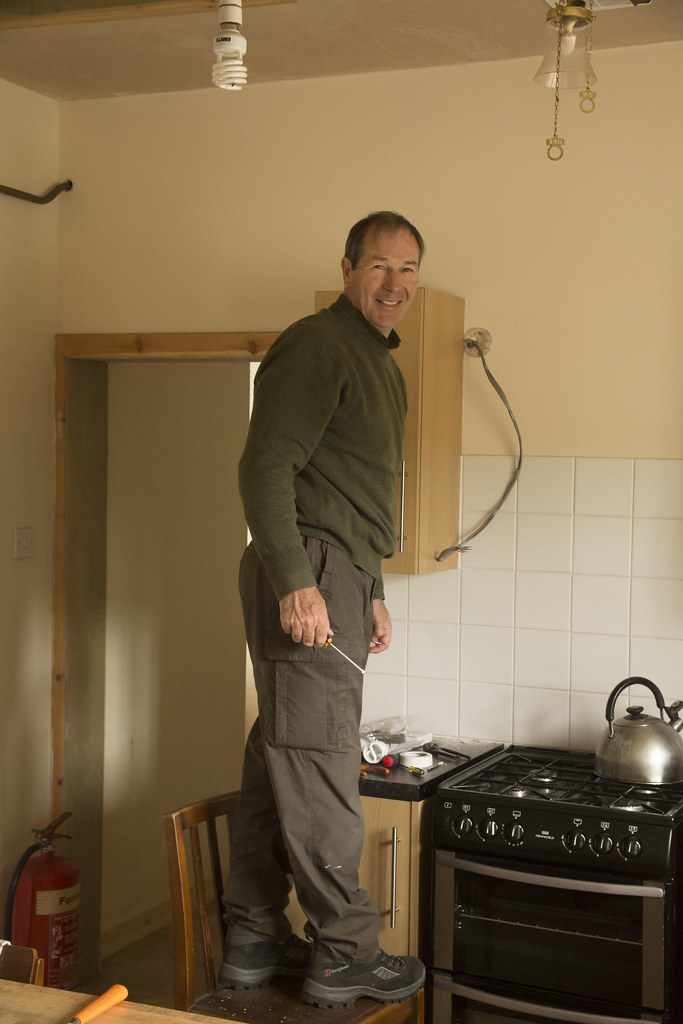
I decided that I would return to lend a bigger hand when the opportunity arose and this I did in 2017 when I visited for a week and helped out as a pass me fetch me kind of helper although I was given free reign with a hammer and nails on the odd occasion!
My role was not exactly key but it gave me a lot of satisfaction to be part of the team that rebuilt one of the traps.
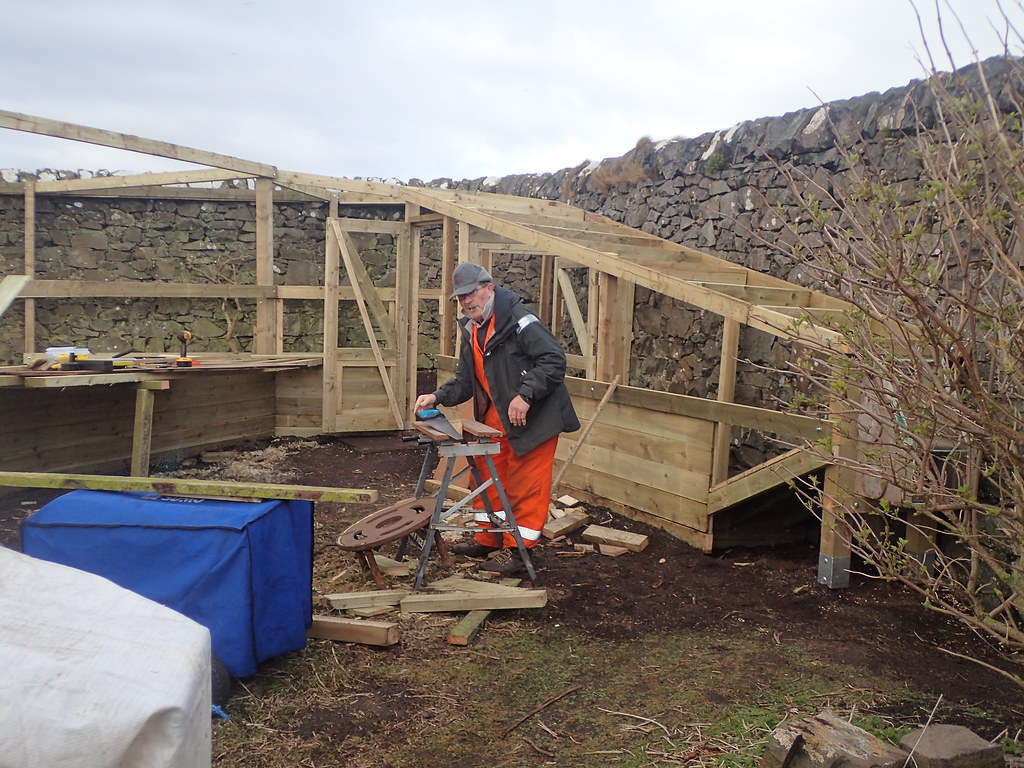
Even though project manager Mark didn't take the news well when told I'd been given a saw.
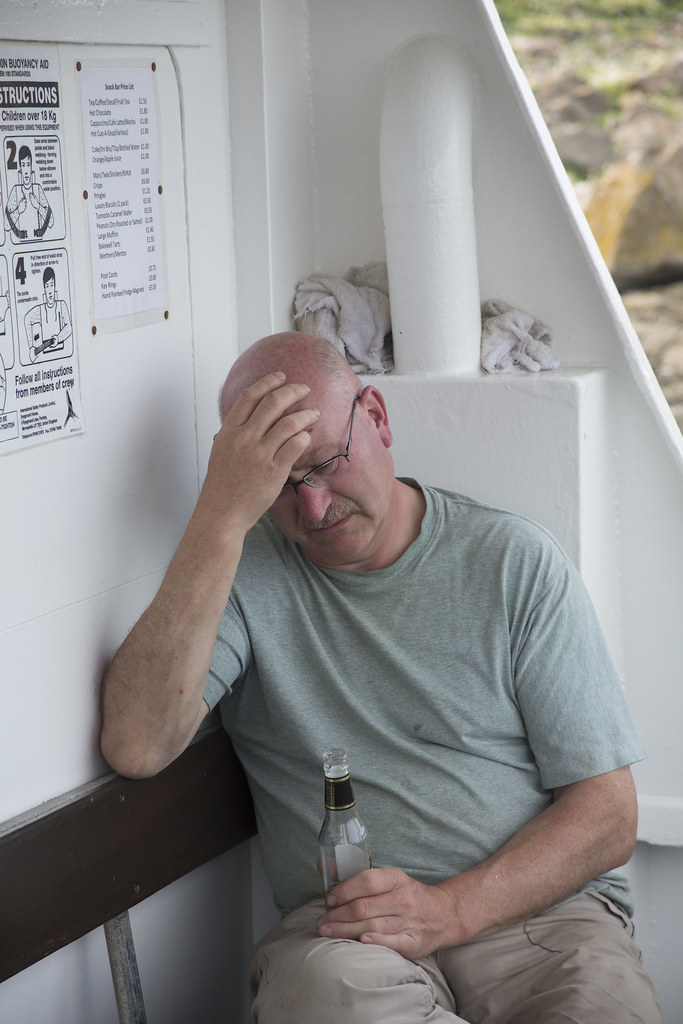
I couldn't allow the blog to pass without mention of the support we get from warden David Steel and his team, they help us to transport our baggage, allow the use of a big freezer for food storage and are always willing to share information or offer help in other ways too.
They are there to greet you on to the island and there to say goodbye which always leaves you wanting to go back for more.
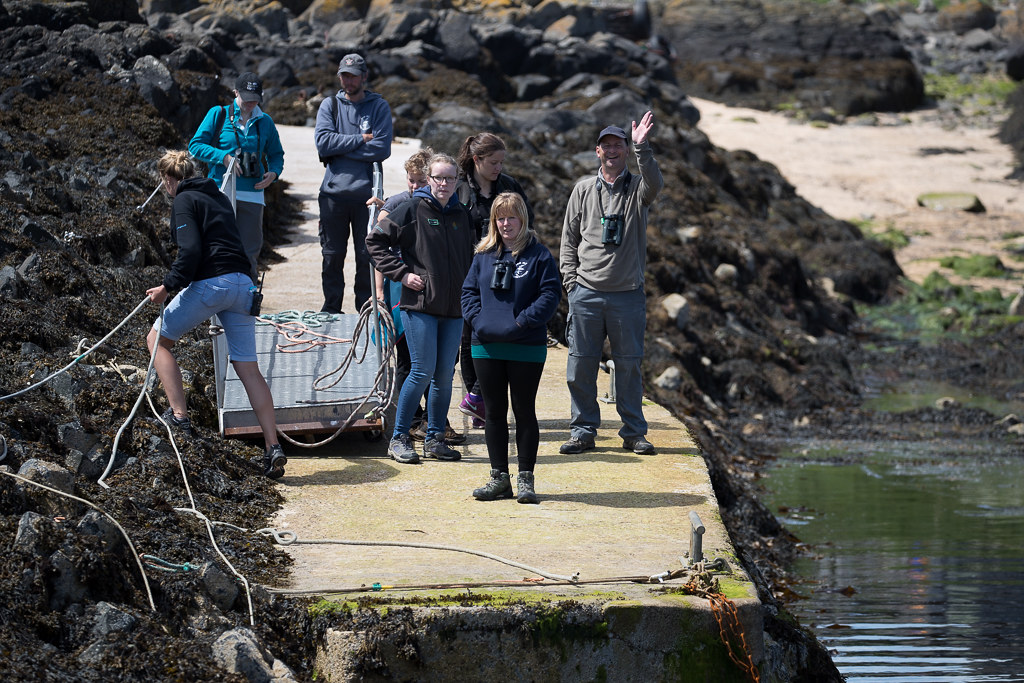
When I will return depends on so many factors not excluding availability of course. There is always room for volunteers though I'm sure, especially if you have a needed skill. It was my intention to offer once again next spring but my current health problems probably mean that it's impossible.
We'll wait and see.
In the meantime I am just grateful that I had the opportunity once again this year and had some great company in the Low Light to make it one of the most enjoyable visits to date with a fun bunch of people as I'm sure you can tell.
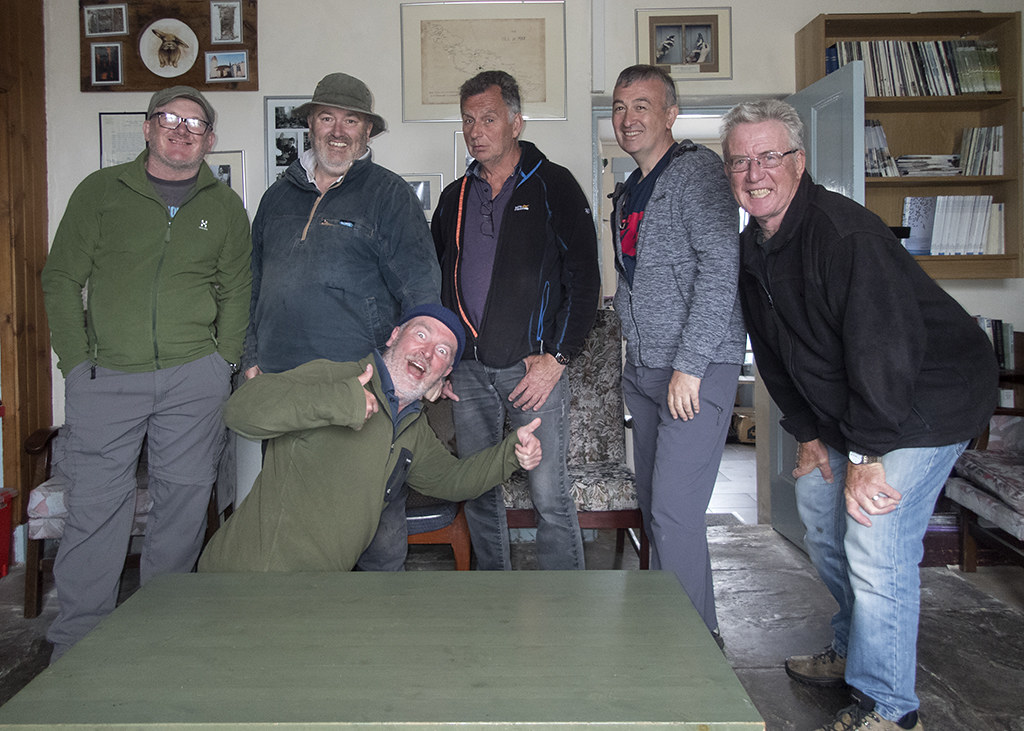
So it's fingers crossed I get to make a return and re-live the thrill and expectations of the next stay as you make the crossing to the little island that is the Isle of May.
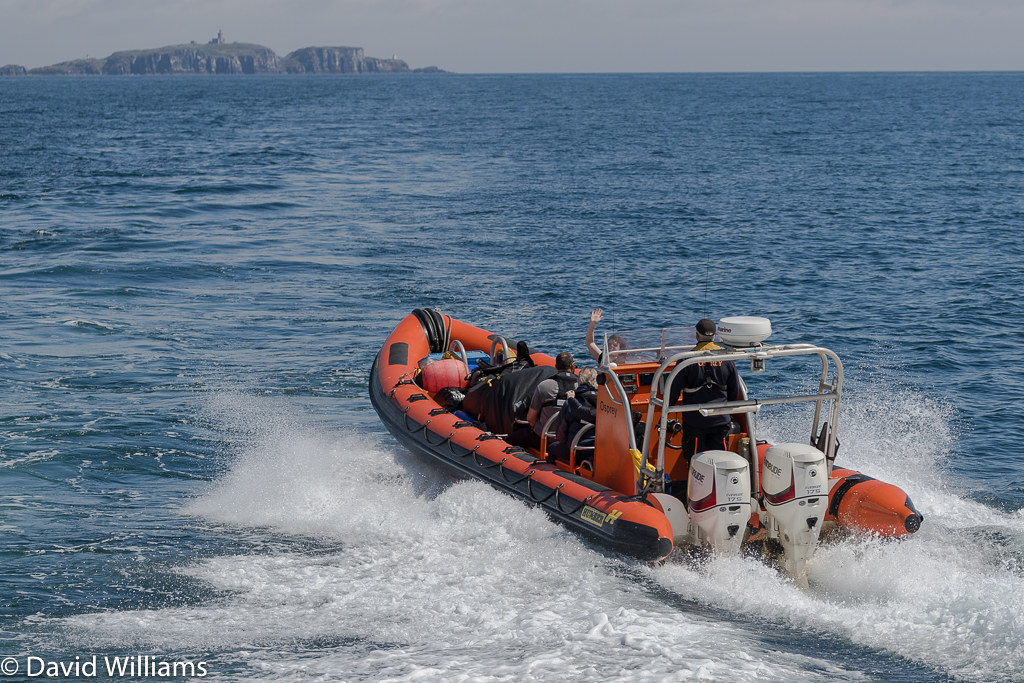
No comments:
Post a Comment